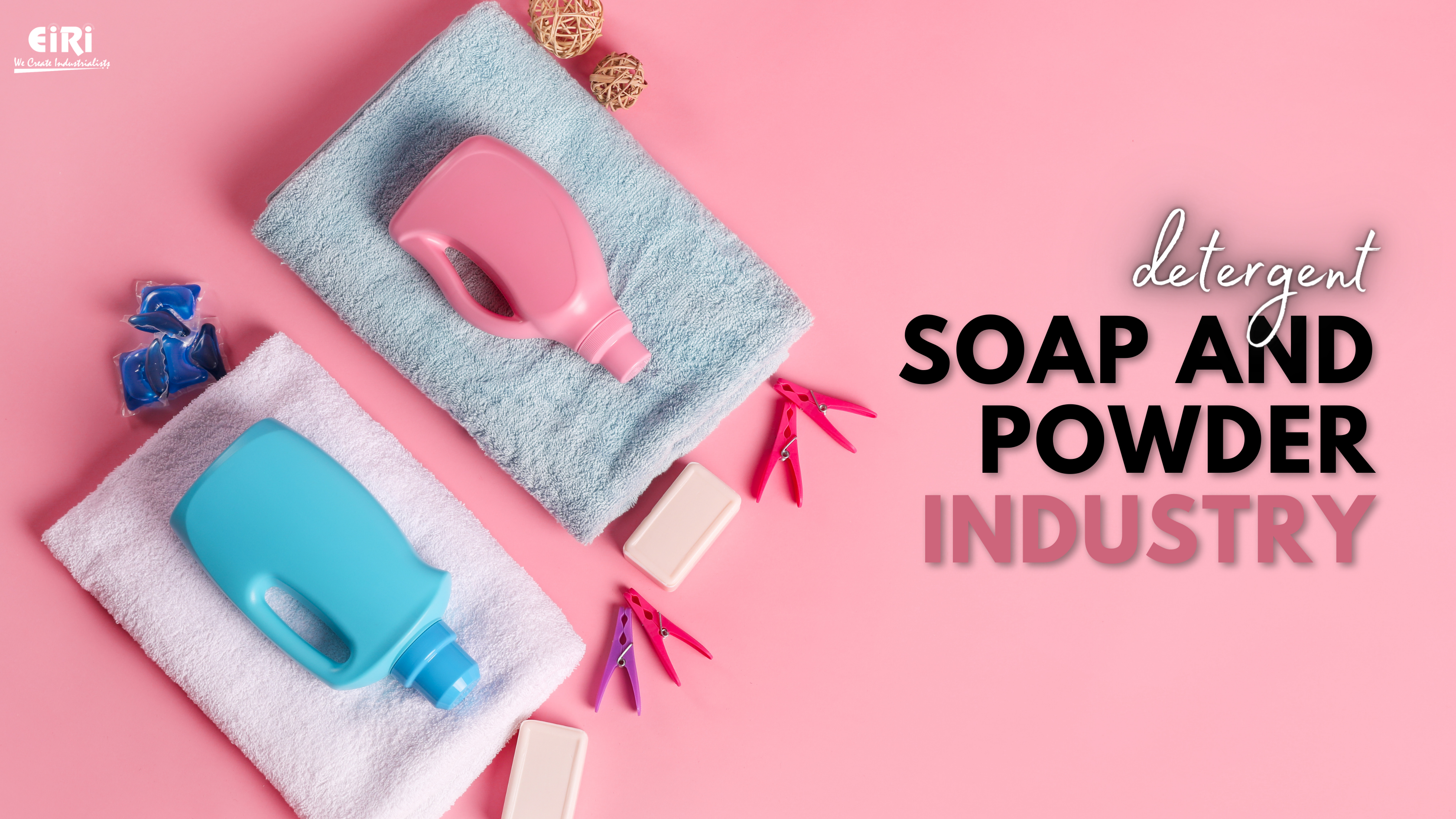Assessing the Market Health of Detergent Soap and Powder Industry
Detergent soaps and powders cater to vital requirements of cleanliness and hygiene — perhaps why they have never been at a loss ever since the soap industry remodeled into an industrial scale that facilitated their mass production.
These products now account for a bulk of the total sale generated by land-based retailers and supermarkets, as they offer a wide range of options to suit the interests and budget of consumers. Thanks to eCommerce, the detergent soaps and powder industry have maintained its growth throughout the COVID-19 pandemic — a sign that reflects upon the sustained interest of the segment.
Market Size: $103.70 billion as of 2020
Projected market size: $207.56 billion by 2025
CAGR: 8.83% between 2020 and 2025
Click Here for Project Report on Soap Industries like Bar Soap, Herbal Soap, Bath Soap, Toilet Soap, Industrial Soap, Laundry Soap, Washing Soap, Liquid Soap, Fish Oil Soap, Metal Polish Soap, Nerol and allied Projects
Understanding the Market
There are two primary methods for marketing detergent soaps and powders. The first is via the direct sales channel, where manufacturers sell directly to consumers or through marketplace retailers, which act as shopkeepers for large-scale retailers. The second strategy is via wholesalers who act as middlemen between manufacturers and retailers. Wholesalers are more likely to purchase sufficiently large quantities of detergent soaps and powders from manufacturers, which provides them with competitive advantages over smaller companies.
As a matter of fact, the detergent soaps and powders industry can never run into a loss due to the following:
- Implementation of standard GMP (Good Manufacturing Products) procedures has been made essential in hotels, restaurants, and healthcare sectors. These stringent healthcare measures have led to growing demands.
- Industrialization of soap processing is another factor that has contributed to an increase in demand for raw materials and finished products in the market.
As such, the market for detergent soaps and powders is highly competitive now, with almost all leading brands competing on price, quality, service, variety, and distribution channels. These factors have been the reason for a clear delineation between market leaders and other players.
Not to mention that green strategy for the industry is also soared through the ranks since the advent of the COVID-19 pandemic. A study reports that more than 34.8% of the people are looking to make use of anti-bacterial soaps, and understandably. Along the same lines, a recent study by scholars at the National University of Singapore highlights how “biodegradable soap” seems to be the next best choice for many people.
Learning About the Market Forecast
Global market size:
- Market Size: $103.70 billion as of 2020
- Projected market size: $207.56 billion by 2025
- CAGR: 8.83% between 2020 and 2025
Indian Market Size:
- Market size: INR 42,827.4 crore as of 2019
- Projected future market size: INR 73,660.4 crore by 2027
- CAGR: 7.0% between 2020 to 2027
A multitude of ingredients are used in manufacturing soaps and detergent powders, and the industrial expansion of a few essential raw materials in this industry can itself create an impression of the future of the soaps and detergent industry.
1. Sodium benzoate: The sodium benzoate industry is estimated to grow almost up to $161.1 million by the year 2027. The CAGR is estimated to be 6.7%. Its simultaneous use in cosmetics and the soaps and detergent powder industry will drive its growth.
2. Cocamidopropyl betaine: The market expansion from $2043.19 million in 2019 to $2646.19 million in 2015 is expected at a CAGR of 4.39%. The wide market use of the betaine product in various fields will add to the upscaling of the production of the soaps & powder detergents.
3. Sodium LaurethSulfate: Due to its use in varying industries, the projected CAGR can reach 3.8%, with the industry touching an estimated value of $666.4 million by 2027.
4. Methylisothiazolinone and methylchloroisothiazolinone
A targeted growth in the coming 5 to 7 years is estimated due to their extensive use in liquid cosmetics and personal care items. As such, the market forecast hints at a 5.15% to 6% CAGR growth in the forthcoming period.
5. pH adjusters
The global sale of pH adjusters is supposed to rise from $932.14 million (2017) to $1,531.16 million by 2025, at a CAGR of 5.87%.
Reviewing the Overall Market
Considering the average growth of the chemicals used in soaps and detergent powders, a basic average estimate can be drawn towards understanding the industrial expansion of the soap and detergent sector. On average, the natural soap market will record an estimated growth of $383.4 million by 2025 at a CAGR of 8.1%.
Due to the increased preferential changes towards organic skincare products, this market will experience significant growth in the coming years, and that doesn’t come as a surprise considering the growing demand for products with natural ingredients.
Wrapping Up
This industry can be termed as a relatively large market with multiple opportunities to explore, especially considering the future forecast for soaps and detergent powders. A few global factors such as stringent laws for food safety and hygienic standards, along with growing population and increased per capita income in developing nations, are expected to lead the demand of this industry.




